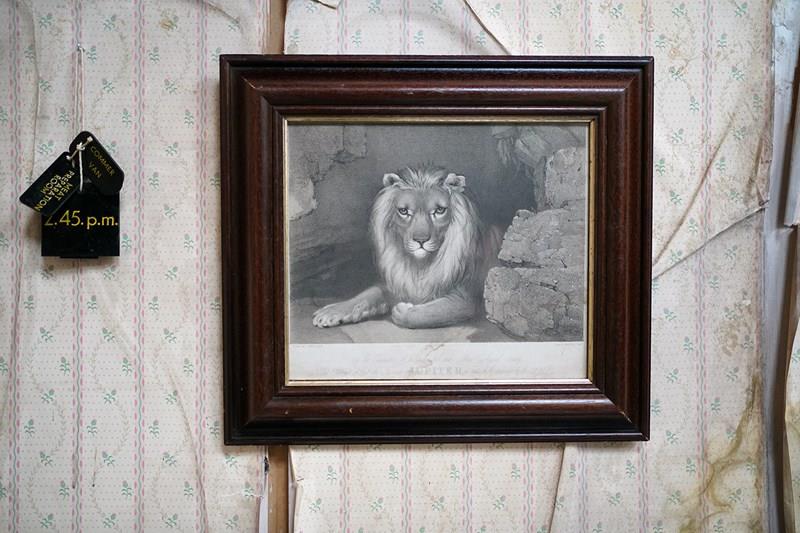Decorative Collective - www.decorativecollective.com
Sellers's Details
DOE AND HOPE
Tel:
Email: [email protected]
https://www.decorativecollective.com/dealers/doe-and-hopeItem Details
After John West Giles (1830-1865) the beautiful stipple engraving showing the seated lion 'Jupiter,' published by John Burbidge, Clifton, June 24th 1853 and with a dedication to the lower margin reading; 'To the committee of the Bristol & Clifton Zoological Society, this portrait of their old favourite 'Jupiter' is respectfully dedicated by the publisher', the whole framed in its original period oak frame and surviving from the early Victorian period and formerly of Bristol zoological gardens.
Remaining in good overall condition, it is found in as original order as could be hoped for aside from one water mark to the lower centre as photographed. The glazing has protected the engraving. There are some small knicked losses to the frame with a label for David Cross Gallery of Bristol.
Said to be an old favourite of the visitors to the Bristol & Clifton Zoological Gardens, Jupiter the lion was one of Bristol Zoo's first lions, and sired many cubs. He passed away from influenza in 1853 (Brown, Ashby & Schwitzer (2011) An Illustrated History Of Bristol Zoo Gardens, pg26).
Opened in 1836 by the Bristol, Clifton and West of England Zoological Society, Bristol Zoo was the world's oldest provincial zoo. The zoo's stated mission was to "maintain and defend" biodiversity through breeding endangered species, conserving threatened species and habitats and promoting a wider understanding of the natural world".
Bristol, like its earlier London counterpart, included several original buildings which have been praised for their architectural quirks, despite being unsuitable for the care of animals; the (former) Giraffe House joined the main entrance lodge to the south gates on Guthrie Road as a Grade II listed building. The old Monkey Temple, resembling a southern Asian temple, was home to an exhibit called "Smarty plants", an interactive exhibit which shows how plants use and manipulate animals to survive. The zoo also has breeding firsts, including the first black rhino born in Britain in 1958, the first squirrel monkey born in captivity in 1953 and the first chimpanzee born in Europe in 1934.
The mammal collection at the zoo numbered around 300, representing 50 species, including: gorillas, Asiatic lions, goodfellow's tree-kangaroo, and red pandas. Among species on view at Bristol which are rare or absent in other UK zoos were Livingstone's fruit bats, aye ayes and quolls.The zoo's Twilight Zone was the first of its kind when it opened, there were many other indoor exhibits including an insect and reptile house and aquarium meanwhile outside there were several aviaries and a seal and penguin enclosure. The lakes' islands were home to gorillas, golden lion tamarins, golden-headed lion tamarins, gibbons and squirrel monkeys.
The Zoo announced on 27 November 2020 that after more than 186 years its main centre in Clifton would close in 2022, with its animals moving to its Wild Place Project site close to the M5 motorway and the zoo reopening there in early 2024.
John West Giles (fl. 1830 – 1865) was a British painter, engraver and lithographer with works covering subjects such as sporting, animal, landscapes topographical views and military costumes, either made after his owns works or those of contemporary artists. He duly exhibited at the Royal Academy between 1830 and 1848, as well as exhibiting five works at the British Institution. He appears to have left Aberdeen by 1838 and after this mostly worked in the London area.
A probable unique engraving of rock solid provenance.
- Period: c.1853
-
- Price: £780.00
- €945 Euro
- $983 US Dollar
- Location: Buckinghamshire
-
- Dimensions: H: 16cm (6.30in)
- W: 17.75cm (6.99in)
- D: 1.25cm (0.49in)
